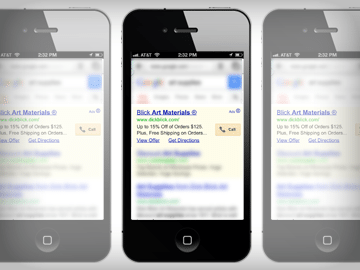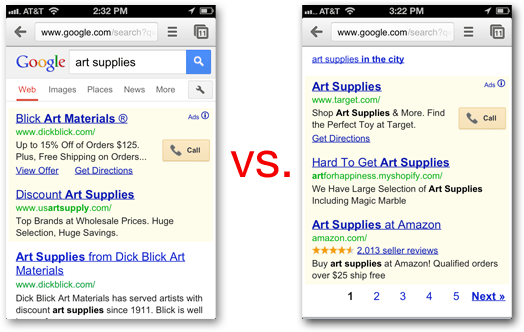
After a series of interviews with SES Chicago speakers, the digital marketing conference is finally here. We stopped by several sessions on Day 1, including “Mobile Marketing Optimization” with Geoff Tam-Scott, Senior Product Manager of Mobile at NBC, and Gagan Kanwar, Director of Partnerships and Research at Marin Software.
Kanwar used data from Marin’s clients to build a solid series of best practices for smartphone-optimized PPC campaigns.
1. Separate campaigns by device
From search intent to location to level of patience, we experience media very differently on a computer versus a tablet versus a smartphone. That’s why it’s important to separate paid media campaigns as specifically as possible – desktop versus mobile is often not enough segmentation. Plus, separating smartphones means you can include mobile-specific calls to action such as “tap to call” and “get directions.”
2. Target users with device-specific copy
Another benefit of breaking down campaigns by device is creating relevant copy for specific operating systems. Kanwar recommends actually including something about the device in the ad – for example in the URL. “When an iPhone user sees an ad with a link to site.com/iphone, they’ll know the experience is optimized for their device,” said Kanwar.
3. Prioritize ad position on SERP
Ad position is important on a desktop and tablet, but possibly even more so on a smartphone. While postions one and two are immediately visible on a smartphone, three is way down at the bottom and far less likely to be seen.

4. Optimize your site for mobile to avoid bounces
An obvious yet important final point is to optimize your landing page for mobile. No matter how mobile-friendly your ad is, a landing page that ignores the user’s device will drive bounce rates up.